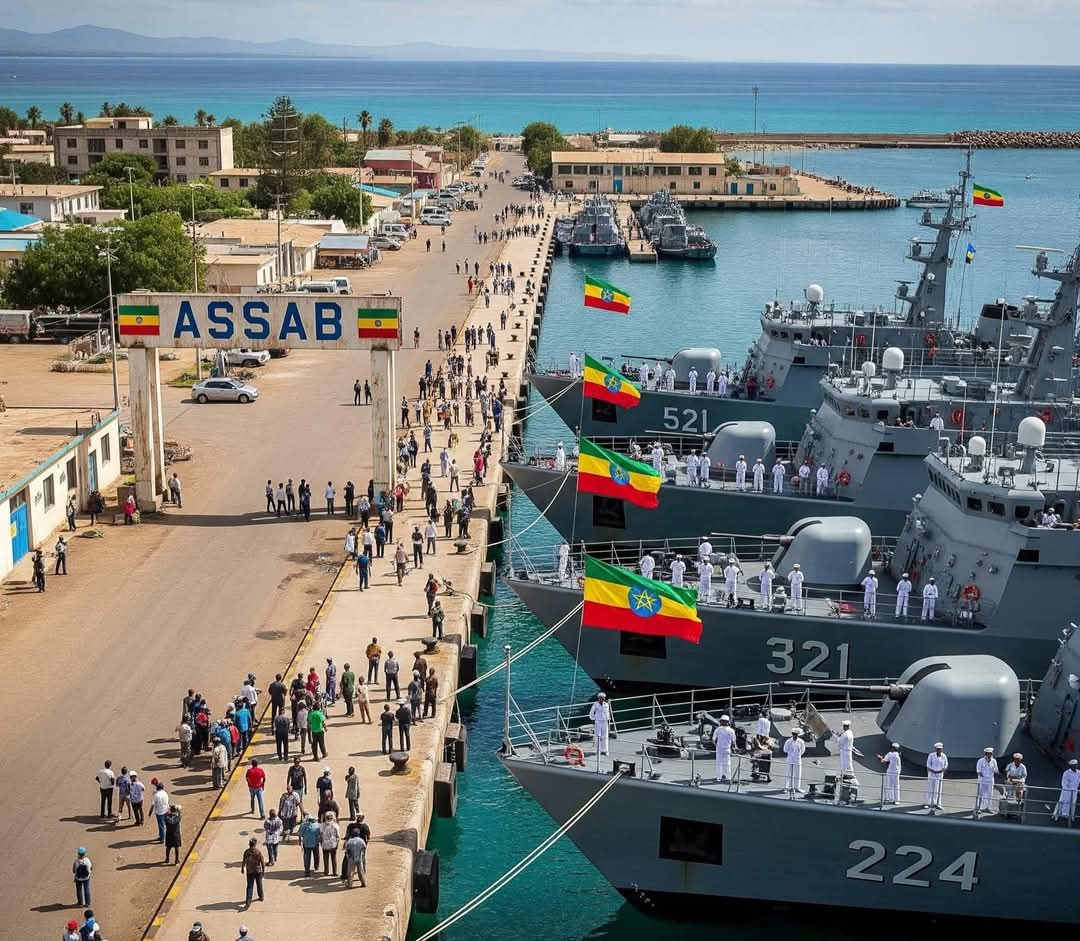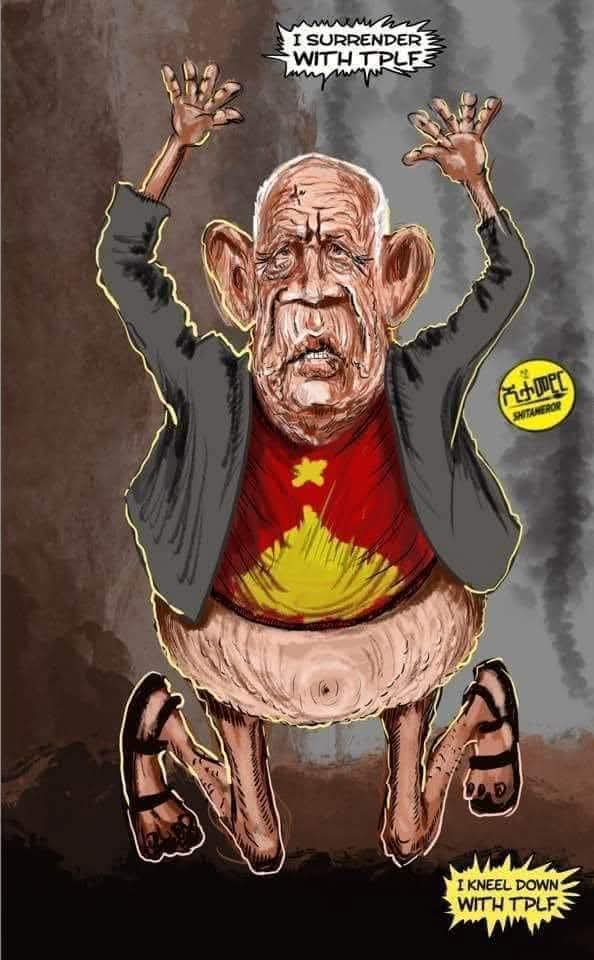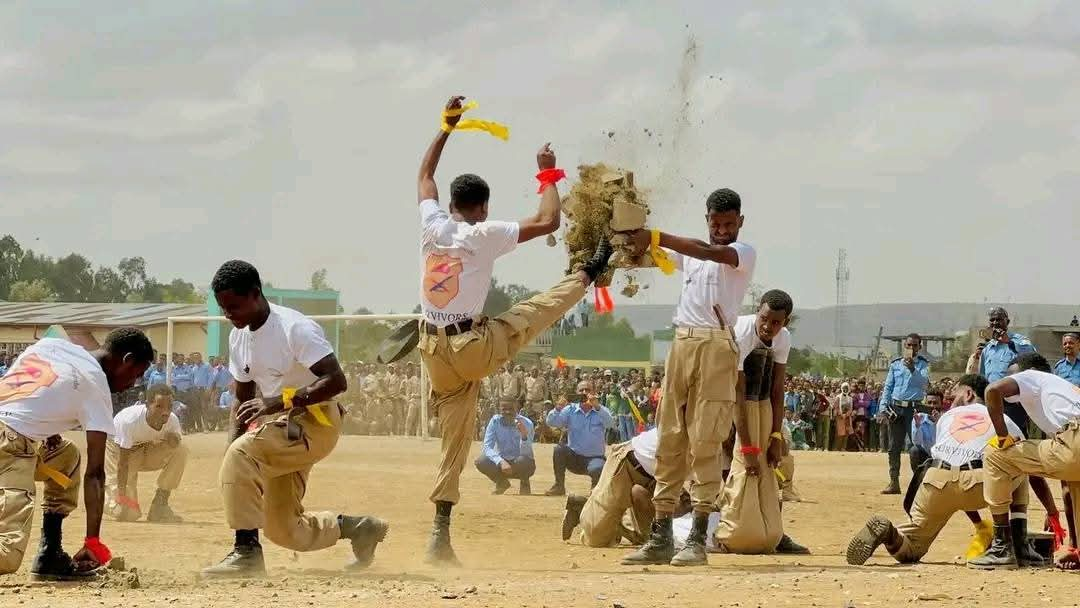Mekelle/Tel Aviv/Nairobi/Pretoria/London
The TPLF Paradox: Eritrea’s Shield or Tigray’s Guardian?
By Horn of Africa Geopolitical Review ✦
Special Edition – International Editorial Board Analysis & Political Security Expertise
A Strategic Political Analysis on Treason, Self-Sabotage, and Misplaced Allegiances
Executive Summary
For decades, the Tigray People’s Liberation Front (TPLF) projected itself as the vanguard of Tigray’s survival and Ethiopia’s federal order. Yet history and evidence point to a troubling paradox: the TPLF political leadership repeatedly placed Eritrea’s national interests above Tigray’s and Ethiopia’s sovereignty.
From the 1980s alliance with the Eritrean People’s Liberation Front (EPLF), to the reckless dismissal of Ethiopia’s Red Sea rights in the 1990s, to sabotaging Ethiopia’s military superiority in the 1998–2000 border war, TPLF leaders consistently acted as if they were “more Catholic than the Pope”—defending Eritrea’s geopolitical survival even at the cost of Tigray’s own existence.
This analysis addresses the central question: Why did the TPLF political leadership prioritize Eritrea’s security and territorial integrity over Tigray’s existential needs and Ethiopia’s rightful Red Sea access?

- National Interest and the Treasonous Exception of TPLF
Every sovereign nation and every serious political party anchors itself in national interest—economic growth, territorial sovereignty, security, and strategic survival.
Yet, the TPLF remains a historical outlier:
Defending Eritrea’s sovereignty while neglecting Tigray’s survival.
Obstructing Ethiopia’s Red Sea access, which would have primarily benefited Tigray.
Failing to punish Eritrea after the genocidal war against Tigray (2020–2022), continuing instead to act as Asmara’s unofficial mouthpiece.
In comparative political history, few liberation movements have so consistently prioritized another state’s interests above their own people’s.
- The Eritrea Obsession: From Ally to Master
1980s – EPLF’s Junior Partner
TPLF grew under the military and political tutelage of EPLF. Eritrean commanders provided arms, training, and political cover.
This fostered a dependency culture where TPLF cadres internalized Eritrea’s national goals as their own.
(See: John Young, Peasant Revolution in Ethiopia: The Tigray People’s Liberation Front, 1975–1991, 1997.)
1990s – The Port of Assab Betrayal
After Eritrea’s independence, Meles Zenawi and Sebhat Nega dismissed Ethiopia’s Red Sea rights with ridicule. Meles declared Assab “nothing more than a camel’s watering hole.”
This concession left Ethiopia landlocked—an irreversible strategic disaster.
(See: Paul Henze, “Eritrea’s Independence and the New Political Order in the Horn of Africa,” RAND, 1990s.)
1998–2000 – War Sabotage
Ethiopian forces, under General Tsadkan Gebretensae, achieved overwhelming battlefield victories and were positioned to take Asmara.
Meles Zenawi blocked the advance, saving Eritrea from collapse and denying Ethiopia its rightful maritime corridor.
(See: Tekeste Negash & Kjetil Tronvoll, Brothers at War: Making Sense of the Eritrean–Ethiopian War, 2000.)
Post-2020 – Alliance with the Executioner
Despite Eritrea’s genocidal invasion of Tigray, atrocities, mass killings, and destruction, TPLF cadres continued framing Asmara as a strategic ally, defending its sovereignty while Tigray lay in ruins.
- Strategic Analysis: Why Sabotage Tigray’s Future?
The TPLF’s pro-Eritrea stance was not incompetence—it was a deliberate political choice shaped by:
Historical Dependency: EPLF was seen as “protector,” never as rival.
Personal Loyalties: Meles Zenawi and Sebhat Nega maintained ideological ties to Eritrean leadership.
Fear of Tigray’s Strength: Denying Red Sea access kept Tigray economically and militarily dependent on Eritrea.
Misguided Ideology: Brotherhood was misread as servitude—making TPLF guardians of Eritrea, not defenders of Tigray.
Strategic Treason: Obstructing Ethiopia’s Red Sea claims was a betrayal of Tigray’s historical, geographical, and economic interests.
- Ethiopia’s Red Sea Question: A Tigray Opportunity Sabotaged
Geographically and historically, Tigray is Ethiopia’s natural corridor to the Red Sea.
Access to Assab would have transformed Tigray into Ethiopia’s gateway of trade—a hub for economic revival.
Instead, TPLF leadership deliberately sabotaged this opportunity, perpetuating dependency and vulnerability.
Global Stakes
The Red Sea–Suez Canal corridor accounts for 15% of global maritime trade and nearly 30% of global container traffic.
Abandoning Ethiopia’s Red Sea rights not only betrayed Tigray but weakened Ethiopia’s role in global security and trade systems.
(See: International Maritime Organization reports, 2023; UNCTAD Review of Maritime Transport, 2022.)
- The Paradox of Guardianship
Are TPLF political leaders guardians of Tigray—or Eritrea’s protectors?
Evidence overwhelmingly points to the latter.
Even after Eritrea’s genocidal war on Tigray, TPLF cadres continue defending Eritrea’s sovereignty more zealously than Tigray’s survival.
This paradox cements the charge: TPLF was never the guardian of Tigray—it was Eritrea’s shield.
- International Context: The Useful Idiots
History has seen “useful idiots” who advance foreign interests at their own expense. Rarely, however, has an entire movement embodied this role:
Meles Zenawi assured Paul Henze (1990) that Ethiopia “must not remain landlocked.” Yet, as prime minister, he ensured exactly that.
U.S. mediators Herman Cohen, Javier Pérez de Cuéllar, and Jimmy Carter observed firsthand TPLF’s duplicity during peace talks.
In every critical turning point, TPLF chose Eritrea’s survival over Ethiopia’s national interest.
- Strategic Lessons for Tigray’s Future
- Break with the Past – Reject the pro-Eritrea servitude mentality embedded in TPLF leadership.
- Reclaim National Interest – Tigray must align with Ethiopia’s rightful Red Sea claim as a matter of survival.
- Independent Leadership – Reformist Tigrayan leaders must emerge free from Eritrean ideological influence.
- Expose Betrayal – Establish a historical truth commission to document TPLF’s sabotage of Tigray’s strategic interests.
- Forge New Alliances – Build partnerships with Ethiopia, U.S., EU, and Red Sea states to restore maritime access.
Conclusion: The Eritrean Shadow Over TPLF
The TPLF’s legacy is not one of guardianship, but of betrayal, misplaced loyalty, and self-sabotage.
While Tigray endured genocide, famine, and displacement, its political leadership became Eritrea’s defenders—preserving Asmara’s sovereignty while denying their own people’s survival.
The unresolved question remains:
Was the TPLF ever the guardian of Tigray, or has it always been the defender of Eritrea?
History suggests the latter. Unless this paradox is broken, Tigray risks remaining hostage to the shadow of TPLF betrayal.
✦ Suggested Titles ✦
“The Eritrea First Party: TPLF’s Treason Against Tigray”
“Guardians of Whom? The TPLF Paradox in Tigray’s Struggle”
“Camel Watering Hole or Geopolitical Lifeline? The Betrayal of Ethiopia’s Red Sea Rights”
“Eritrea’s Shield, Tigray’s Wound: The TPLF Dilemma”
✦ Selected References ✦
John Young, Peasant Revolution in Ethiopia: The Tigray People’s Liberation Front, 1975–1991 (Cambridge University Press, 1997).
Tekeste Negash & Kjetil Tronvoll, Brothers at War: Making Sense of the Eritrean–Ethiopian War (Ohio University Press, 2000).
Paul Henze, Layers of Time: A History of Ethiopia (Palgrave Macmillan, 2000).
Herman J. Cohen, Intervening in Africa: Superpower Peacemaking in a Troubled Continent (Macmillan, 2000).
UNCTAD, Review of Maritime Transport (2022).
International Maritime Organization, Global Shipping and Maritime Security Reports (2023).





